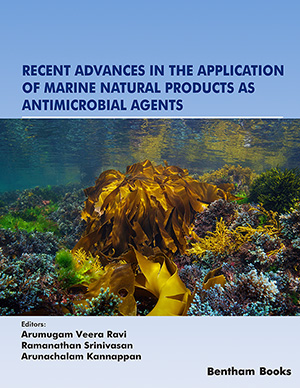Abstract
Antimicrobial compounds are groups consistent with the microorganisms
that they could potentially act against bacteria or fungi. It is expected to kill
microorganisms or inhibit their growth and activity. As the case of antimicrobial
resistance increases, nature has been generous in providing compounds with the
potential to treat various ailments and infectious diseases. Bacteria, fungi and plants are
known to own a good list of antibacterial molecules. Although research has been
carried out to reveal the antimicrobial potential of natural products, the significance of
vast terrestrial and marine Animalia has gained momentum. Though the naturally
available antimicrobial agents obtained from plants, animals and microbial sources are
considered safe in comparison with synthetic molecules, the outbreak of pathogens
needs exploration over and above the reported ones. As the synthetic antimicrobials
soon become immune to pathogens, it makes emphasis on antimicrobials from novel
origins that have a long duration of effectiveness. The marine environment houses a
wide and taxonomically diverse species of algae, mollusks, sponges, corals and
tunicates. These organisms have adapted to survive the infectious environment by
producing pharmacologically active compounds of phlorotannins, fatty acids,
polysaccharides, peptides, and terpenes that help in battling bacterial annexation. As
marine algae provide considerable opportunities in antimicrobials, the optimization in
the methodologies leading to extraction and purification plays a greater role in
capturing the antimicrobial activity of the bioactive molecules. Though an outsized
number of potential antimicrobial compounds from marine algae have been identified
and isolated, the majority of those compounds are yet to be categorized and
commercialized. Recent research in algae focused on “omics” where metagenomics,
metatranscriptomics and metaproteomics are done to understand better pathway leading
to the synthesis of various functional molecules.
Keywords: Antimicrobials, Anti-inflammatory, Antioxidants, Bacterial infections, Byproducts, Cell extracts, Environmental stress, Exploration, Food supplements, Functional molecules, Fungi, Gram-positive and -negative bacteria, Macroalgae, Marine seaweeds, Novel sources, Omics research, Optimization methodologies, Pharmacological activity, Phlorotannins, Secondary metabolites, Sterols.






















